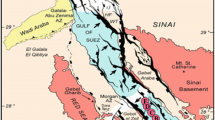Abstract
The Liaohe Oil Field has passed peak production and correct discrimination of hydraulic units (HU) has vital significance for forecasting remaining oil distribution in a petroleum reservoir, enhancing the recovery ratio and adjusting development plans. A unified multi-parameter cluster analysis and fuzzy quality synthetic evaluations have been used for the identification of reservoir hydraulic units. This paper analyzes three predictions within Block Shen-95: intersection of multiple well-logs, independent mulitple well-logs and mutually exclusive multiple well-logs. HU has been delineated to conveniently compute permeability and serve as the basis of a structural model for enhanced simulation study. HU has been defined by the flow zone indicator concept using a modified Kozeny-Carmen equation. The Bayesian method was used to predict HU at uncored wells by constructing a probability database and then integrating established HU and well-log responses at cored wells. HU has then been inferred from the database using well-log responses. Estimated permeability from predicted HU gave an overall improved permeability match when compared with traditional statistical methods. The method proved most favourable when using mutually exclusive multiple well-logs, most significant by integrating reservoir performance with HU distribution and indicating that reasonable prediction had been obtained at uncored wells using this mutually exclusive approach. The distribution pattern was revealed by interwell HU correlation using modified depositional cycles as a framework, an integration step that qualitatively examines prediction accuracy. Detailed analysis has been carried out to determine and verify the characteristics of each kind of flow unit, providing a detailed geological basis for control of the oil field.
Similar content being viewed by others
References Cited
Abbaszadeh, M., Fujii, H., Fujimoto, F., 1996. Permeability Prediction by Hydraulic Flow Units-Theory and Applications. SPE Formation Evaluation, 11(4): 263–271. doi:10.2118/30158-PA
Aguilera, R., Aguilera, M. S., 2001. The Integration of Capillary Pressures and Pickett Plots for Determination of Flow Units and Reservoir Containers. SPE Annual Technical Conference and Exhibition, Louisiana. doi:10.2118/71725-MS
Amaefule, J. O., Altunbay, M., Tiab, D., et al., 1993. Enhanced Reservior Description: Using Core and Log Date to Identify Hydraulic (Flow) Units and Predict Permeability in Uncore Intervels/Wells. SPE Anmual Technical Conference and Exhibition, Texas. doi:10.2118/26436-MS
Aminian, K., Thomas, B., Ameri, S., et al., 2002. A New Approach for Reservoir Characterization. SPE Eastern Regional Meeting, Lexington. doi:10.2118/78710-MS
Biniwale, S., Behrenbruch, P., 2004. The Mapping of Hydraulic Flow Zone Units and Characterization of Australian Geological Deposition Environments. SPE Asia Pacific Oil and Gas Conference and Exhibition, Australia. doi:10.2118/88521-MS
Ebanks, W. J., 1987. Flow Unit Concepts: Integrated Approach to Reservoir Description for Engineering Projects. AAPG Bulletin, 71(5): 551–556
Gunter, G. W., Finneran, J. M., Hartmann, D. J., et al., 1997. Early Detemination of Reservoir Flow Units an Integrated Petrophysical Method. SPE Annual Technical Conference and Exhibition, Texas. doi:10.2118/38679-MS
Hearn, C. L., Ebanks, W. J., Tye, R. S., et al., 1984. Geological Factors Influencing Reservoir Performance of the Hartzog Draw Field, Wyoming. Journal of Petroleum Technology, 36(8): 1335–1344. doi:10.2118/12016-PA
Kapur, L., Lake, L. W., Sepehrnoori, K., 1998. Facies Prediction from Core and Log Data Using Artificial Neural Network Technology. 39th Annual Logging Symposium, Colorado. SPWLA-1998-PP
Lawal, K. A., Onyekonwu, M. O., 2005. A Robust Approach to Flow Unit Zonation. Nigeria Annual International Conference and Exhibition, Nigeria. doi:10.2118/98830-MS
Li, Y. M., Anderson, S. R., 2006. Facies Identification from Well Logs: A Comparison of Discriminant Analysis and Naive Bayes Classifier. Journal of Petroleum Science and Engineering, 53: 149–157
Martin, A. J., Solomon, S. T., Hartmann, D. J., 1997. Characterization of Petrophysical Flow Units in Carbonate Reservoirs. AAPG Bulletin, 81: 734–759
Perez, H. H., Datta-Gupta, A., Mishra, S., 2005. The Role of Electrofacies, Lithofacies, and Hydraulic Flow Units in Permeablity Predictions from Well Logs: A Comparative Analysis Using Classification Trees. SPE Reservoir Evaluation and Engineering, 8(2): 143–155. doi:10.2118/84301-PA
Schatz, B. M., Heinemann, Z. E., 2007. Flow-Based Determination of Hydraulic Units. 69th EAGE Conference & exhibition/Incorporating, London. doi:10.2118/107158-MS
Svirsky, D., Ryazanov, A., Pankov, M., et al., 2004. Hydraulic Flow Units Resolve Reservoir Description Challenges in a Siberian Oil Field. SPE Asia Pacific Conference on Integrated Modelling for Asset Management, Kuala Lumpur. doi:10.2118/87056-MS
Ti, G. M., Ogbe, D. O., Walt, M., et al., 1995. Use of Flow Units as a Tool for Reservoir Description: A Case Study. SPE Formation Evaluation, 10(2): 122–128. doi:10.2118/26919-PA
Tang, H., White, C. D., 2008. Multivariate Statistical Log Logfacies Classification on a Shallow Marine Reservoir. Journal of Petroleum Science and Engineer, 61: 88–93
Author information
Authors and Affiliations
Corresponding author
Rights and permissions
About this article
Cite this article
Zhou, W., Liang, S., Ma, D. et al. Statistical verification of hydraulic units in a heterogeneous reservoir of the Liaohe Oilfield. J. Earth Sci. 25, 991–1002 (2014). https://doi.org/10.1007/s12583-001-0434-1
Received:
Accepted:
Published:
Issue Date:
DOI: https://doi.org/10.1007/s12583-001-0434-1




